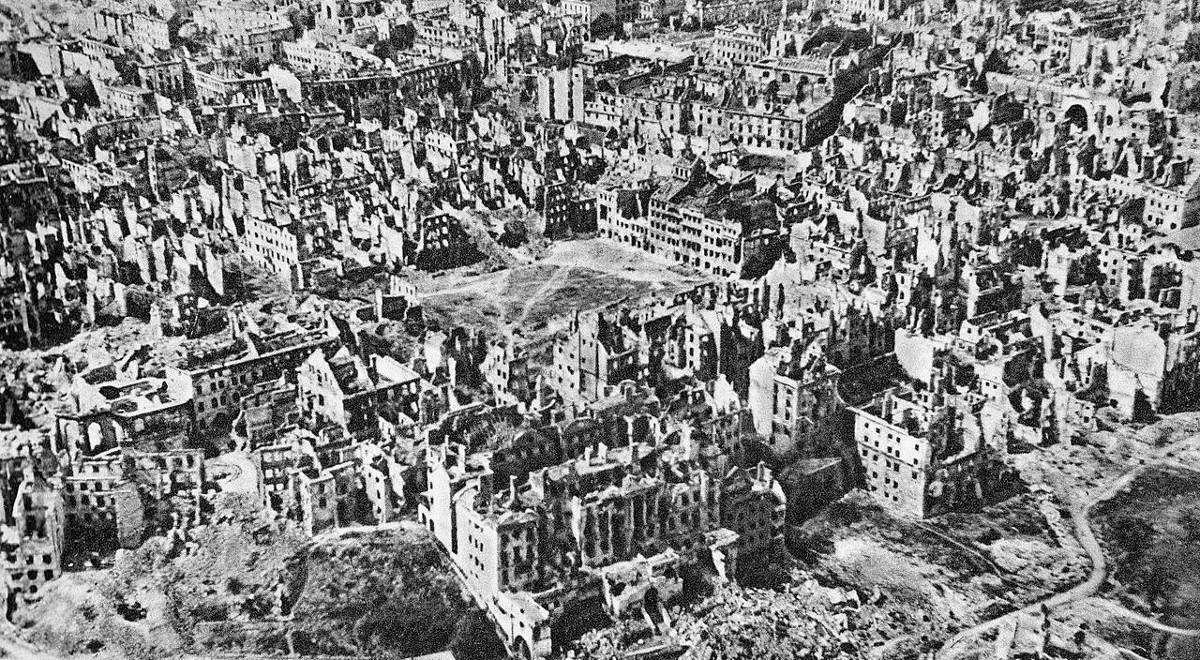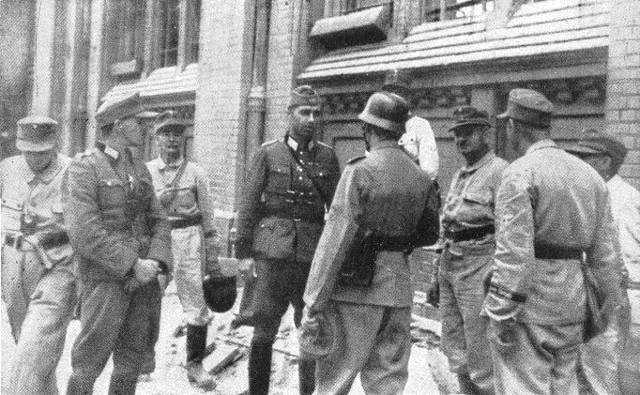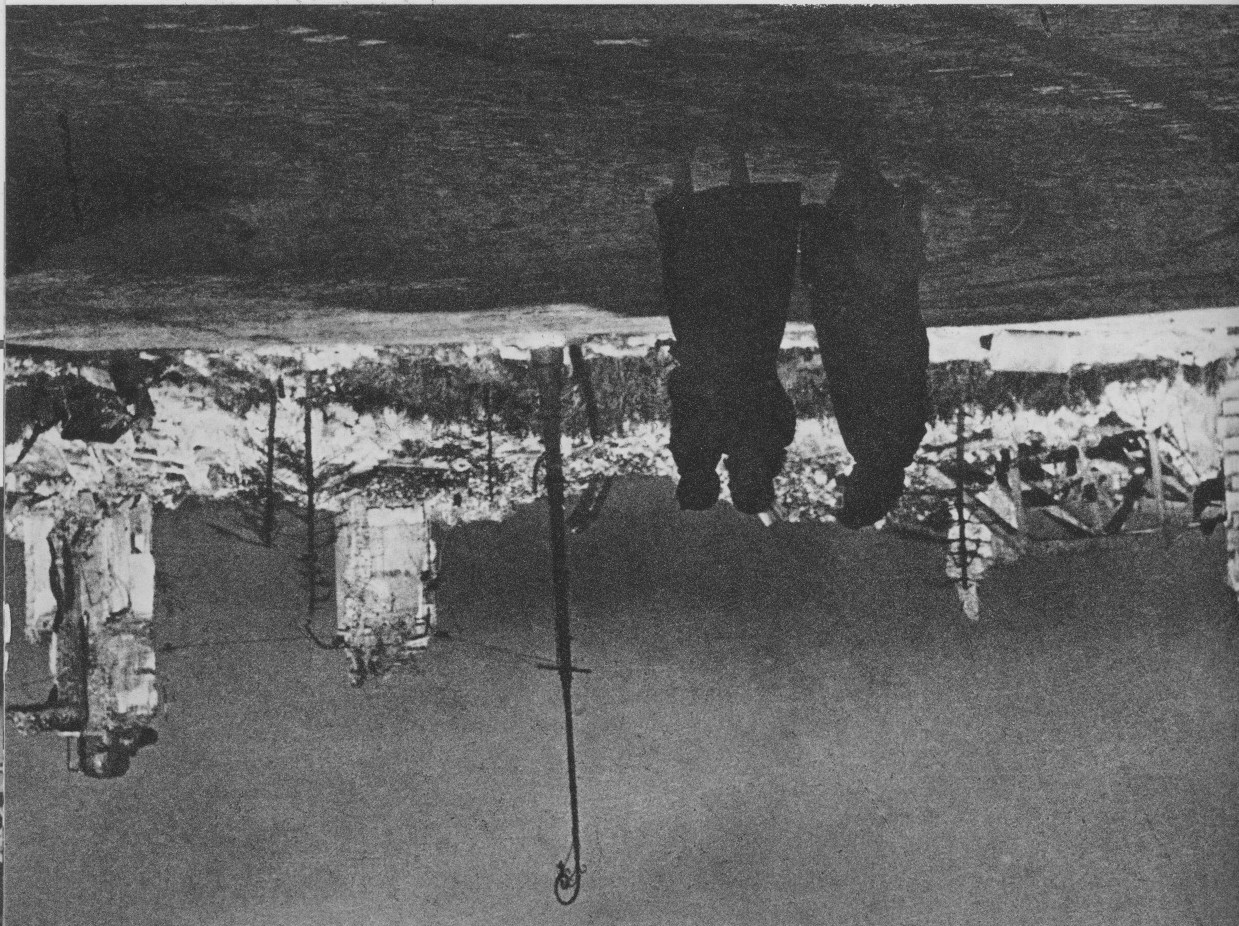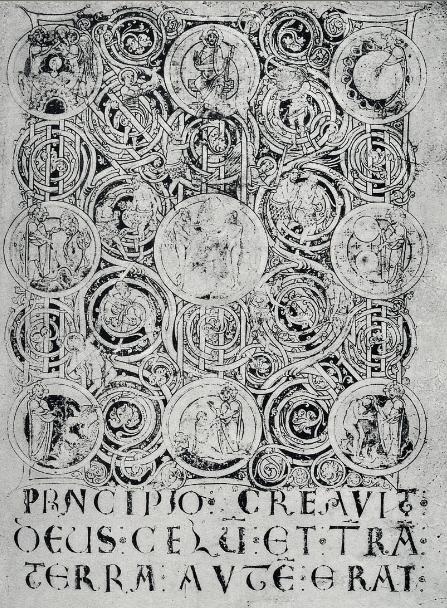Planned destruction of Warsaw on:
[Wikipedia]
[Google]
[Amazon]
The destruction of Warsaw was

 The
The
 After the remaining population had been expelled, the Germans began the destruction of the remnants of the city.Warsaw Uprising: FAQ
After the remaining population had been expelled, the Germans began the destruction of the remnants of the city.Warsaw Uprising: FAQ
/ref> Special groups of German
"For over two months..."
By January 1945, between 85% and 90% of the buildings had been completely destroyed; this includes up to 10% as a result of the September 1939 campaign and following combat, up to 15% during the earlier
 Material losses were estimated at 10,455 buildings, 923 historical buildings (94%), 25 churches, 14 libraries including the
Material losses were estimated at 10,455 buildings, 923 historical buildings (94%), 25 churches, 14 libraries including the
Raport o stratach wojennych Warszawy LISTOPAD 2004
Straty Warszawy w albumie
an
Straty wojenne Warszawy
while for example, the National Library's list of pre-war property lost estimated to be 1% of its collection since Germans destroyed all archives too).

 During the German suppression of the Warsaw Uprising of 1944, around 70 to 80% of libraries were carefully burned by the ''Brandkommandos'' (burning detachments), whose mission was to burn Warsaw. In October 1944 the
During the German suppression of the Warsaw Uprising of 1944, around 70 to 80% of libraries were carefully burned by the ''Brandkommandos'' (burning detachments), whose mission was to burn Warsaw. In October 1944 the
File:Bundesarchiv Bild 183-2008-0415-508, Warschau, Luftaufnahme, Zerstörungen.jpg, Warsaw during World War II: destroyed townhouses between Zielna (top) and Marszałkowska streets (bottom). In bottom right corner building Marszałkowska 156 on the corner with Królewskia street, also visible Bloch Palace at Marszałkowska 154. September 1939
File:Warsaw during WWII - Rondo Dmowskiego.jpg, Intersection of Marszałkowska Street and Aleje Jerozolimskie Street in Warsaw during German occupation. Visible tramway #3 with a billboard "Kamea woda kwiatowa". Behind it ruins of destroyed in 1939 townhouse at Marszałkowska 98/al. Jerozolimskie 33 streets.
File:Warsaw Uprising - Prudential Hit - frame 2a.jpg, Prudential Building, hit by a 2-ton mortar shell
File:Old Town Warsaw waf-2012-1501-31(1945).jpg,
 Warsaw was rebuilt by the Polish people between the 1950s and 1970s. The Palace of Culture and Science (completed in 1955) was a "gift" from the Soviet Union. Some landmarks were reconstructed as late as the 1980s. While the Old Town has been thoroughly reconstructed, the New Town has been only partially restored to its former state.
Warsaw was rebuilt by the Polish people between the 1950s and 1970s. The Palace of Culture and Science (completed in 1955) was a "gift" from the Soviet Union. Some landmarks were reconstructed as late as the 1980s. While the Old Town has been thoroughly reconstructed, the New Town has been only partially restored to its former state.
Collection of civilian testimonies about destruction of WarsawCapturing the Ruins of Warsaw
{{authority control Demolition Nazi war crimes during the Warsaw Uprising Germany–Poland relations
Nazi Germany
Nazi Germany (lit. "National Socialist State"), ' (lit. "Nazi State") for short; also ' (lit. "National Socialist Germany") (officially known as the German Reich from 1933 until 1943, and the Greater German Reich from 1943 to 1945) was ...
's substantially effected razing of the city in late 1944, after the 1944 Warsaw Uprising
The Warsaw Uprising ( pl, powstanie warszawskie; german: Warschauer Aufstand) was a major World War II operation by the Polish underground resistance to liberate Warsaw from German occupation. It occurred in the summer of 1944, and it was led ...
of the Polish resistance. The uprising infuriated German leaders, who decided to destroy the city as retaliation.
The German razing of the city had long been planned. Warsaw had been selected for destruction and major reconstruction as part of the Nazis' planned Germanization
Germanisation, or Germanization, is the spread of the German language, people and culture. It was a central idea of German conservative thought in the 19th and the 20th centuries, when conservatism and ethnic nationalism went hand in hand. In ling ...
of Central Europe, under the Nazi Generalplan Ost
The ''Generalplan Ost'' (; en, Master Plan for the East), abbreviated GPO, was the Nazi German government's plan for the genocide and ethnic cleansing on a vast scale, and colonization of Central and Eastern Europe by Germans. It was to be under ...
. However, by late 1944, with the war clearly lost, the Germans had abandoned their plans of colonizing the East. Thus, the destruction of Warsaw did not serve any military or colonial purpose; it was carried out solely as an act of reprisal.
German forces dedicated an unprecedented effort to razing the city, destroying 80–90% of Warsaw's buildings, including the vast majority of museums, art galleries, theaters, churches, parks, and historical buildings such as castles and palaces. They deliberately demolished, burned, or stole an immense part of Warsaw's cultural heritage. After the war, extensive work was put into rebuilding the city according to pre-war plans and historical documents.
Prewar plan of destruction
On June 20, 1939, while Adolf Hitler was visiting an architectural bureau in Würzburg am Main, he noticed a project of a future German town – ''Neue deutsche Stadt Warschau''. According to thePabst Plan
The Pabst Plan (german: Neue deutsche Stadt Warschau, "New German city of Warsaw") was a Nazi German urban plan to reconstruct the city of Warsaw as a Nazi model city. Named after its creator Friedrich Pabst, :pl:Friedrich Pabst the Nazis' "Chief ...
, Warsaw was to be turned into a provincial German city of 130,000. Third Reich planners drafted precise drawings outlining a historic "Germanic" core where a select few landmarks would be saved such as the Royal Castle which would serve as Hitler's state residence. The Plan, which was composed of 15 drawings and a miniature architectural model, was named after German army architect Friedrich Pabst who refined the concept of destroying a nation's morale and culture by destroying its physical and architectural manifestations. The design of the actual new German city over the site of Warsaw was devised by Hubert Gross. The aftermath of the failure of the Warsaw Uprising presented an opportunity for Hitler to begin to realize his pre-war conception.
Warsaw Uprising's aftermath
Expulsion of civilians

 The
The Warsaw Uprising
The Warsaw Uprising ( pl, powstanie warszawskie; german: Warschauer Aufstand) was a major World War II operation by the Polish underground resistance to liberate Warsaw from German occupation. It occurred in the summer of 1944, and it was led ...
was launched by the Polish Home Army
The Home Army ( pl, Armia Krajowa, abbreviated AK; ) was the dominant resistance movement in German-occupied Poland during World War II. The Home Army was formed in February 1942 from the earlier Związek Walki Zbrojnej (Armed Resistance) est ...
on August 1, 1944, as part of Operation Tempest
file:Akcja_burza_1944.png, 210px, right
Operation Tempest ( pl, akcja „Burza”, sometimes referred to in English as "Operation Storm") was a series of uprisings conducted during World War II against occupying German forces by the Polish Home ...
. In response, under orders from Heinrich Himmler
Heinrich Luitpold Himmler (; 7 October 1900 – 23 May 1945) was of the (Protection Squadron; SS), and a leading member of the Nazi Party of Germany. Himmler was one of the most powerful men in Nazi Germany and a main architect of th ...
, Warsaw was kept under ceaseless barrage by Nazi artillery and air power for sixty-three days and nights by Erich von dem Bach-Zelewski
Erich Julius Eberhard von dem Bach-Zelewski (born Erich Julius Eberhard von Zelewski; 1 March 1899 – 8 March 1972) was a high-ranking SS commander of Nazi Germany
Nazi Germany (lit. "National Socialist State"), ' (lit. "Nazi State" ...
.
In 1944, a large transit camp (''Durchgangslager'') was constructed in Pruszków's Train Repair Shops (Zakłady Naprawcze Taboru Kolejowego) to house the evacuees expelled from Warsaw. In the course of the Warsaw Uprising and its suppression, the Germans deported approximately 550,000 of the city's residents and approximately 100,000 civilians from its outskirts, sending them to . The security police and the SS segregated the deportees and decided their fate. Approximately 650,000 people passed through the Pruszków camp in August, September, and October. Approximately 55,000 were sent to concentration camps, including 13,000 to Auschwitz. They included people from a variety of social classes, occupations, physical conditions, and ages. Evacuees ranged from infants only a few weeks old to the extremely elderly. In a few cases, these were also people of different ethnic backgrounds, including Jews living on "Aryan papers".Księga Pamięci, ''Transporty Polaków z Warszawy do KL Auschwitz 1940–1944'' (Memorial Book: Transports of Poles from Warsaw to Auschwitz Concentration Camp 1940–1944)
Looting and destruction of buildings
 After the remaining population had been expelled, the Germans began the destruction of the remnants of the city.Warsaw Uprising: FAQ
After the remaining population had been expelled, the Germans began the destruction of the remnants of the city.Warsaw Uprising: FAQ/ref> Special groups of German
combat engineers
A combat engineer (also called pioneer or sapper) is a type of soldier who performs military engineering tasks in support of land forces combat operations. Combat engineers perform a variety of military engineering, tunnel and mine warfare tas ...
were dispatched throughout the city in order to burn (''Brandkommandos'') and demolish (''Sprengkommandos'') the remaining buildings. According to German plans, after the war Warsaw was to be turned into nothing more than a military transit station.Peter K. Gessner"For over two months..."
By January 1945, between 85% and 90% of the buildings had been completely destroyed; this includes up to 10% as a result of the September 1939 campaign and following combat, up to 15% during the earlier
Warsaw Ghetto Uprising
The Warsaw Ghetto Uprising; pl, powstanie w getcie warszawskim; german: link=no, Aufstand im Warschauer Ghetto was the 1943 act of Jewish resistance in the Warsaw Ghetto in German-occupied Poland during World War II to oppose Nazi Germany' ...
, 25% during the Uprising, and 40% due to systematic German demolition of city after the uprising.

 Material losses were estimated at 10,455 buildings, 923 historical buildings (94%), 25 churches, 14 libraries including the
Material losses were estimated at 10,455 buildings, 923 historical buildings (94%), 25 churches, 14 libraries including the National Library
A national library is a library established by a government as a country's preeminent repository of information. Unlike public libraries, these rarely allow citizens to borrow books. Often, they include numerous rare, valuable, or significant wo ...
, 81 primary schools, 64 high schools, the University of Warsaw
The University of Warsaw ( pl, Uniwersytet Warszawski, la, Universitas Varsoviensis) is a public university in Warsaw, Poland. Established in 1816, it is the largest institution of higher learning in the country offering 37 different fields o ...
, the Warsaw University of Technology
The Warsaw University of Technology ( pl, Politechnika Warszawska, lit=Varsovian Polytechnic) is one of the leading institutes of technology in Poland and one of the largest in Central Europe. It employs 2,453 teaching faculty, with 357 professor ...
, and most of the city's historical monuments. Almost a million inhabitants lost all of their possessions. The exact losses of private and public property, including pieces of art, other cultural artifacts and scientific artifacts, is unknown but must be considered substantial since Warsaw and her inhabitants were the richest and wealthiest Poles in pre-war Poland. In 2004, the President of Warsaw
The city mayor of Warsaw, or more literally the ''city president of Warsaw'' (the official title in Polish is ''"prezydent miasta stołecznego Warszawy"'', literal translation ''"president of the capital city of Warsaw"'') is the head of the exe ...
, Lech Kaczyński
Lech Aleksander Kaczyński (; 18 June 194910 April 2010) was a Polish politician who served as the city mayor of Warsaw from 2002 until 2005, and as President of Poland from 2005 until his death in 2010. Before his tenure as president, he pre ...
(later President of Poland
The president of Poland ( pl, Prezydent RP), officially the president of the Republic of Poland ( pl, Prezydent Rzeczypospolitej Polskiej), is the head of state of Poland. Their rights and obligations are determined in the Constitution of Pola ...
), established a historical commission to estimate losses to public property alone that were inflicted on the city by German authorities. The commission estimated the losses to be at least $31.5 billion. Those estimates were later raised to $45 billion and in 2005, to $54.6 billion (all equated to 2004 dollars). The official estimates don't include immense losses of private property, which are of unknown value since almost all of the pre-war documents (such as insurance values of private collections) have also been destroyed, but are considered between double and triple the official estimates (which are based on documented losses onlySee the following pages on the official site of WarsawRaport o stratach wojennych Warszawy LISTOPAD 2004
Straty Warszawy w albumie
an
Straty wojenne Warszawy
while for example, the National Library's list of pre-war property lost estimated to be 1% of its collection since Germans destroyed all archives too).
Burning of libraries
Załuski Library
The Załuski Library ( pl, Biblioteka Załuskich, la, Bibliotheca Zalusciana) established in Warsaw in 1747 by Józef Andrzej Załuski and his brother, Andrzej Stanisław Załuski, both Roman Catholic bishops, was a public library nationalized ...
, the oldest public library in Poland and one of the oldest and most important libraries in Europe (established in 1747), was burned down. Out of about 400,000 printed items, maps
A map is a symbolic depiction emphasizing relationships between elements of some space, such as objects, regions, or themes.
Many maps are static, fixed to paper or some other durable medium, while others are dynamic or interactive. Although ...
and manuscript
A manuscript (abbreviated MS for singular and MSS for plural) was, traditionally, any document written by hand – or, once practical typewriters became available, typewritten – as opposed to mechanically printed or reproduced in ...
s, only some 1,800 manuscripts and 30,000 printed materials survived.
In the last phase of the Warsaw Uprising and after its collapse, in September and October 1944, the three major private libraries in Warsaw (Krasiński Library
Krasiński Library (''Biblioteka Krasińskich w Warszawie'') was a library in Warsaw, founded in 1844. During the German invasion and occupation of Poland, part of the building was destroyed and its collections were stolen, redistributed, or burn ...
, Przeździecki Library and the Libraty of Zamoyski Family Entail), including collections of priceless value to Polish culture, ceased to exist. Those libraries had already suffered in September 1939, when they were bombed and burned.
An important collection of books belonging to the Krasiński Library
Krasiński Library (''Biblioteka Krasińskich w Warszawie'') was a library in Warsaw, founded in 1844. During the German invasion and occupation of Poland, part of the building was destroyed and its collections were stolen, redistributed, or burn ...
, created in 1844, was largely destroyed in 1944. The collection originally consisted of 250,000 items. During the Uprising, on September 5, 1944, the library's warehouse
A warehouse is a building for storing goods. Warehouses are used by manufacturers, importers, exporters, wholesalers, transport businesses, customs, etc. They are usually large plain buildings in industrial parks on the outskirts of cities ...
s were shelled by German artillery and burned almost completely. Some of the books were preserved, thrown through windows by the library's staff. The surviving collection was later deliberately burned by the Germans in October 1944 after collapse of the Uprising. About 26,000 manuscript
A manuscript (abbreviated MS for singular and MSS for plural) was, traditionally, any document written by hand – or, once practical typewriters became available, typewritten – as opposed to mechanically printed or reproduced in ...
s, 2,500 incunables, 80,000 early printed books, 100,000 drawings and prints, 50,000 note and theater manuscripts, and a large collection of maps and atlas
An atlas is a collection of maps; it is typically a bundle of maps of Earth or of a region of Earth.
Atlases have traditionally been bound into book form, but today many atlases are in multimedia formats. In addition to presenting geograp ...
es were lost. The Przeździecki Estate Library in 6 Foksal Street included 60,000 volumes and 500 manuscripts, a rich archive containing 800 parchment and paper documents, and a cartographic collection consisting of 350 maps, atlases and plans. In addition to 10,000 prints and drawings, there was an extensive art gallery (''Portrait of Casimir Jagiellon'' from the 15th century, ''Portrait of John III Sobieski'' from the Schleissheim Palace
The Schleißheim Palace (german: Schloss Schleißheim) comprises three individual palaces in a grand Baroque park in the village of Oberschleißheim, a suburb of Munich, Bavaria, Germany. The palace was a summer residence of the Bavarian ruler ...
, the ''House altar of Sophia Jagiellon'', 1456), valuable collection of miniatures and decorative art: textiles, porcelain, faience, glass, gold objects, military, etc. It burned down on September 25, 1939 as a result of severe aerial bombardment by the Germans (incendiary bombing). The surviving items sheltered in the neighbouring tenement house
A tenement is a type of building shared by multiple dwellings, typically with flats or apartments on each floor and with shared entrance stairway access. They are common on the British Isles, particularly in Scotland. In the medieval Old Town, i ...
at Szczygla Street were burned in October 1944. The last of above mentioned libraries, the Library of the Zamoyski Family Entail, acquired collections of 70,000 works (97,000 volumes), more than 2,000 manuscripts, 624 parchment diplomas, several thousand manuscripts, a collection of engravings, coins and 315 maps and atlases. Library collections also gathered numerous collections of art: a rich collection of militaria, miniatures, porcelain, faience
Faience or faïence (; ) is the general English language term for fine tin-glazed pottery. The invention of a white pottery glaze suitable for painted decoration, by the addition of an oxide of tin to the slip of a lead glaze, was a major a ...
and glass, natural collections, research tools etc., gathered mostly during the existence of the Zamoyski Academy
The Zamoyski Academy ( pl, Akademia Zamojska; la, Hippaeum Zamoscianum) 1594–1784) was an academy founded in 1594 by Polish Crown Chancellor Jan Zamoyski."''Akademia Zamojska''" ("Zamojski Academy"), '' Encyklopedia Polski'', p. 13. It was th ...
. In 1939, about 50,000 items (about 30%) were destroyed in bombing. On September 8, 1944, the Germans set fire to both the Zamoyski Palace (Blue Palace) and the library building.
The Central Military Library, containing 350,000 books on the history of Poland, was destroyed, including the Library of Polish Museum in Rapperswil deposited there for safekeeping. The collection of the Rapperswil Library was transported to Poland in 1927. The library and the museum were founded in Rapperswil
Rapperswil (Swiss German: or ;Andres Kristol, ''Rapperswil SG (See)'' in: ''Dictionnaire toponymique des communes suisses – Lexikon der schweizerischen Gemeindenamen – Dizionario toponomastico dei comuni svizzeri (DTS, LSG)'', Centre de dial ...
, Switzerland, in 1870 as "a refuge for oland'shistoric memorabilia dishonored and plundered in the ccupied Polishhomeland" and for the promotion of Polish interests. The greater part of library's collections, originally 20,000 engravings, 92,000 books and 27,000 manuscripts, were deliberately destroyed by the Germans in 1944.
Unlike earlier Nazi book burnings
The Nazi book burnings were a campaign conducted by the German Student Union (, ''DSt'') to ceremonially burn books in Nazi Germany and Austria in the 1930s. The books targeted for burning were those viewed as being subversive or as representi ...
where specific books were deliberately targeted, the burning of those libraries was part of the general burning of a large part of the city of Warsaw. This resulted in the disappearance of many valuable old books and scrolls among about sixteen million volumes from National Library, museums and palaces burnt indiscriminately by Germans in Poland during World War II.
Scope of destruction
Gallery
Warsaw Old Town
Warsaw Old Town ( pl, Stare Miasto, italic=yes and colloquially as ''Starówka'') is the oldest part of Warsaw, the capital city of Poland. It is bounded by the ''Wybrzeże Gdańskie'' (Gdańsk Boulevards), along with the bank of the Vistula river, ...
marketplace, 1945
File:The Royal Castle in Warsaw, 1945.jpg, Royal Castle reduced to rubble
File:Powstanie warszawskie ulica Marszałkowska.jpg, Marszałkowska Street in flames
File:Ursus factory in Warsaw set on fire during Warsaw Uprising.jpg, German soldiers in front of a burning Ursus factory
File:Warszawa Nowe Miasto 1944.jpg, St. Mary's Church, destroyed in 1944.
File:Warsaw Uprising - Christ of Holy Cross Church.jpg, Statue of Jesus Christ from the Holy Cross Church
File:Płonąca Hala Mirowska Powstanie warszawskie.jpg, Mirów Halls in flames
File:Sigismund's Column demolished during the Warsaw Uprising 01.jpg, Sigismund's Column demolished by German tank shell
File:Bundesarchiv Bild 146-1996-057-10A, Warschauer Aufstand, Soldat mit Flammenwerfer.jpg, A German soldier sets fire to a building
File:Aerial photograph of the destroyed Warsaw Ghetto.jpg, Aerial photograph of the destroyed Warsaw Ghetto
The Warsaw Ghetto (german: Warschauer Ghetto, officially , "Jewish Residential District in Warsaw"; pl, getto warszawskie) was the largest of the Nazi ghettos during World War II and the Holocaust. It was established in November 1940 by the G ...
File:Polish Soldier's Grave Warsaw 1945.jpg, Polish soldier's grave before ruins on Wyjazd Street
File:Polish Army Parade waf-2012-1502-29 (1945).jpg, Parade of the First Polish Army
First or 1st is the ordinal form of the number one (#1).
First or 1st may also refer to:
*World record, specifically the first instance of a particular achievement
Arts and media Music
* 1$T, American rapper, singer-songwriter, DJ, and rec ...
on Marszałkowska Street
File:Castleinwarsaw1947.jpg, Royal Castle near the Vistula River
The Vistula (; pl, Wisła, ) is the longest river in Poland and the ninth-longest river in Europe, at in length. The drainage basin, reaching into three other nations, covers , of which is in Poland.
The Vistula rises at Barania Góra in ...
(1948)
Warsaw's rebuilding
 Warsaw was rebuilt by the Polish people between the 1950s and 1970s. The Palace of Culture and Science (completed in 1955) was a "gift" from the Soviet Union. Some landmarks were reconstructed as late as the 1980s. While the Old Town has been thoroughly reconstructed, the New Town has been only partially restored to its former state.
Warsaw was rebuilt by the Polish people between the 1950s and 1970s. The Palace of Culture and Science (completed in 1955) was a "gift" from the Soviet Union. Some landmarks were reconstructed as late as the 1980s. While the Old Town has been thoroughly reconstructed, the New Town has been only partially restored to its former state.
See also
*Chronicles of Terror
Chronicles of Terror is a digital internet archive established by the in August 2016. Initially, it provided access to the depositions of Polish citizens who after World War II were interviewed as witnesses before the Main Commission for the Inve ...
* Destruction of Kalisz
* List of libraries damaged during World War II
* List of Polish cities damaged in World War II
* Nero Decree
The Nero Decree (german: Nerobefehl) was issued by Adolf Hitler on 19 March 1945, ordering the destruction of German infrastructure to prevent its use by Allied forces as they penetrated deep within Germany. It was officially titled Decree Con ...
References
Bibliography
*External links
*Collection of civilian testimonies about destruction of Warsaw
{{authority control Demolition Nazi war crimes during the Warsaw Uprising Germany–Poland relations
Warsaw
Warsaw ( pl, Warszawa, ), officially the Capital City of Warsaw,, abbreviation: ''m.st. Warszawa'' is the capital and largest city of Poland. The metropolis stands on the River Vistula in east-central Poland, and its population is officia ...